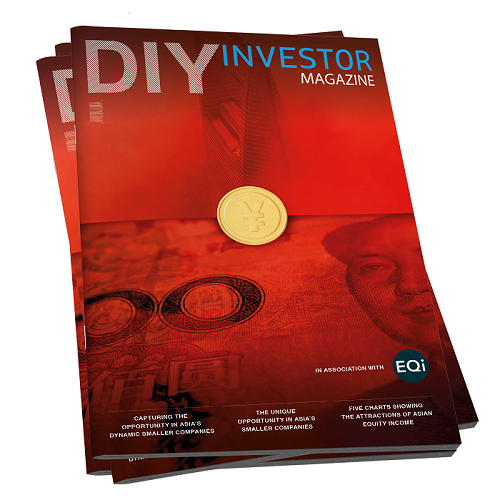Apr
2024
Why Small ETFs are not Necessarily Less Liquid
DIY Investor
21 April 2024



Mark Abssy, Head of Indexing at Tematica Research and Co-Manager of the Tematica Bita Cleaner Living Sustainability Screened Index
If you think back to the first time you heard about Exchange Traded Funds (ETFs) they were probably explained to you as ‘similar to mutual funds but they trade like shares on an exchange.’ For the most part, this is true. Mutual funds have a single official daily net asset valuation (NAV) that is used by all buyers and sellers on the day.
If you want to buy or sell a mutual fund, you enter your trade and it will be filled at the end of day using that day’s NAV. In contrast, ETF share prices are live continuously throughout each trading day based on an intraday NAV that should reflect the fund’s underlying holdings.
As a result, ETFs are more similar to individual shares, being traded throughout the day. But this comparison stops working when investors make assumptions about comparing individual share and ETF share liquidity.
More Buyers than Sellers
Often when you ask why shares of a public company rose you will get the response that ‘there was more buyers than sellers.’ Everyone has a chuckle, and it is understood that the person you are asking either doesn’t want to share their insight into the company or simply doesn’t know. The truth of it is that regardless of the motivation of traders, there were indeed more buyers than sellers and that demand for shares is what drove that price up.
If we reach back to Economics 101, we remember that given a fixed supply, an increase in demand will cause the perceived value of that supply to increase. This principle plus a whole bunch of correlation tables are how market makers do their voodoo and put a price on shares.
ETFs are slightly different. When it comes to ETFs, if there are more buyers than sellers, more shares get created. ETFs launch with a fixed amount of shares. However, market participants can create and retire shares through what is known as the Creation/Redemption process. The shares of an ETF represent ownership of a portfolio of securities referred to as a ‘basket’.
‘If there are more buyers than sellers, more shares get created. ETFs launch with a fixed amount of shares’
Basically, when there is an imbalance in an ETF order book (more buyers than sellers, for example) the share price will start to deviate from the actual value of the assets (NAV) of the fund. Once the premium gets high enough, market participants step in, buy the basket of stocks that the ETF tracks and trade the underlying basket of shares for shares in the ETF. They will then take these ETF shares and sell them on the open market, pocketing the difference.
Crucially, however, this whole process keeps price and NAV in line. First, it puts downward pressure on the ETF’s share price, hopefully pushing it closer towards the NAV. Second, it puts upwards pressure on the underlying shares in the ETF, as the whole process has seen market participants purchase these shares in the market. This process will be repeated until price and net asset value converge. Once they do, the arbitrage gap narrows.
I Told You That Story So I Could Tell You This One
Equity liquidity can be measured a few different ways. For example, some may look at market capitalization and share volume and others may look at bid/ask spread. Overall, the goal in evaluating equity liquidity is to make sure that any single trade isn’t going to have an undue impact on the stock’s price (affect price discovery).
Another goal may be to figure out if you’re going to be able to unwind your position when you want. While measuring bid/ask spread can be used effectively with ETFs, the notion that a fund’s Assets Under Management (AUM) or Average Daily Volume (ADV) has anything to do with your trade getting filled is just plain wrong.
As I mentioned earlier, ETF shares represent ownership in a basket of securities. This is important because when you place an ETF buy order, you are essentially investing in the underlying shares held by that ETF. Say I just launched a new FANGMAN ETF [1] and on day one it lists with 100,000 shares at a $15 NAV giving it AUM of $1.5 million.
Because I have a great marketing team, everyone wants shares of this fund as soon as it is listed. Are they all fighting over 100,000 shares of a $1.5 million fund, driving up share prices and creating liquidity issues? Of course not.
‘Investors concerned about liquidity should stop worrying so much about ETF size and instead focus on the underlying holdings.’
Those FANGMAN stocks represent a combined market cap of about $7 trillion so even if on day one I have $1 billion of inflows, it doesn’t matter because market participants, using the creation and redemption mechanism, are going to deliver $1 billion of equities from a pool of $7 trillion!
This example might seem extreme but the principle is the same even if you’re talking about relatively small ETFs. The AUM and trading volume of an ETF should be irrelevant when it comes to evaluating the fund’s strategy. If you want to gauge a fund’s ability to absorb your trade, look at the current holdings and do some quick math to figure out if the allocation of your investment is going to create liquidity issues for any of the underlying securities.
Over the years, I have spoken at various conferences and explained this to rooms full of brokers and retail investors alike. During my presentation I always see heads nodding in agreement and a few indications of enlightenment.
Invariably, sometime later in the conference I will be talking to some of these same folks and ask them their thoughts on a new or lower AUM fund and the immediate reaction is, ‘too small, not enough volume.’
Investors concerned about liquidity should stop worrying so much about ETF size and instead focus on the underlying holdings.
When you invest in ETFs, your capital is at risk.
[1] FANGMAN represents the following companies: Meta (Facebook), Apple, Nvidia, Google, Microsoft, Amazon and Netflix

Introducing the Cleaner Living Index
Europe’s first-ever comprehensive, consumer-focused Cleaner Living ETF ‘DTOX’
HANetf and Quikro joined forces to launch an ETF focused on healthier living and cleaner planet trends.
The Cleaner Living ESG-S Ucits ETF (DTOX) invests in themes centred around the shift in consumer sentiment: cleaner food & dining, cleaner health & beauty, cleaner building & infrastructure, cleaner transportation, and cleaner energy.
The fund qualifies as an Article 8 strategy under Sustainable Financial Disclosure Regulation (SFDR) and has a total expense ratio of 0.59%.
The DTOX ETF tracks the Tematica Bita Cleaner Living Sustainability Screened index, which includes companies with at least 80% of their revenue or earnings coming from the structural change powering cleaner living.
Companies in the index include Beyond Meat, Blink Charging Co, Nio, Peloton Interactive, Renewable Energy Group, Trex Company, and Telsa.
The ETF has an additional sustainability screen to provide adherence to international standards concerning environmental protection, human rights, labour practices, anti-corruption, and controversial weapons development
Tematica Research is an independent investment research firm focused on the development of thematic research and indices.
The firm focuses on identifying sustainable market shifts that come about due to shifting economics, demographics, psychographics, technologies, mixed with regulatory mandates and other forces.
Click for more information about The Cleaner Living ESG-S Ucits ETF (DTOX)

Commentary » Exchange traded products Commentary » Exchange traded products Latest » Latest » Mutual funds Commentary
Leave a Reply
You must be logged in to post a comment.